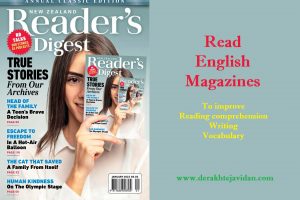علائم نگارشی در زبان انگلیسی (2) : Punctuation

علائم نگارشی در زبان انگلیسی (2) : Punctuation
Punctuation: colons (:) and semi-colons (;)
We use colons to introduce lists:
There are three main reasons for the success of the government: economic, social and political.
We also use colons to indicate a subtitle or to indicate a subdivision of a topic:
Life in Provence: A Personal View
We often use colons to introduce direct speech:
Then he said: ‘I really cannot help you in any way.’
We commonly use a colon between sentences when the second sentence explains or justifies the first sentence:
Try to keep your flat clean and tidy: it will sell more easily.
We use semi-colons instead of full stops to separate two main clauses. In such cases, the clauses are related in meaning but are separated grammatically:
Spanish is spoken throughout South America; in Brazil the main language is Portuguese.
Semi-colons are not commonly used in contemporary English. Full stops and commas are more common.
Punctuation: quotation marks (‘…’ or “…”)
Quotation marks in English are ‘…’ or “…”. In direct speech, we enclose what is said within a pair of single or double quotation marks, although single quotation marks are becoming more common. Direct speech begins with a capital letter and can be preceded by a comma or a colon:
She said, “Where can we find a nice Indian restaurant?” (or She said: ‘Where can we find a nice Indian restaurant?’)
We can put the reporting clause in three different positions. Note the position of commas and full stops here:
The fitness trainer said, ‘Don’t try to do too much when you begin.’ (quotation mark after comma introducing speech and after full stop)
‘Don’t try to do too much when you begin,’ the fitness trainer said. (comma before closing quotation mark)
‘Don’t try to do too much,’ the fitness trainer said, ‘when you begin.’ (commas separating the reporting clause)
When we use direct speech inside direct speech, we use either single quotation marks inside double quotation marks, or double quotation marks inside single quotation marks:
“It was getting really cold,” he said, “and they were saying ‘When can we go back home?’”
Jaya said, ‘They were getting really excited and were shouting “Come on!”’.
We commonly use question marks inside the quotation marks unless the question is part of the reporting clause:
‘Why don’t they know who is responsible?’ they asked.
So did they really say ‘We will win every match for the next three weeks’?
We also use single quotation marks to draw attention to a word. We can use quotation marks in this way when we want to question the exact meaning of the word:
I am very disappointed by his ‘apology’. I don’t think he meant it at all.
NEW ‘WAR’ OVER NORTH SEA FISHING PLANS
Tag:رایتینگ, علائم نگارشی



